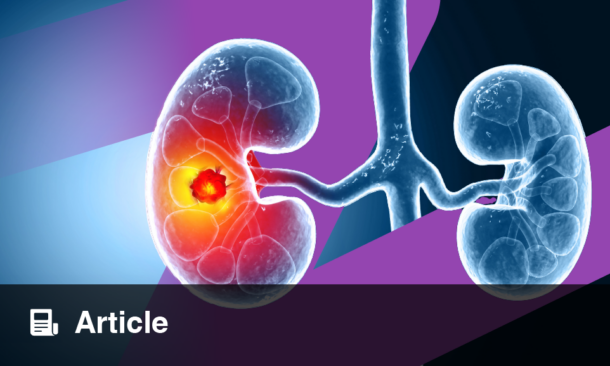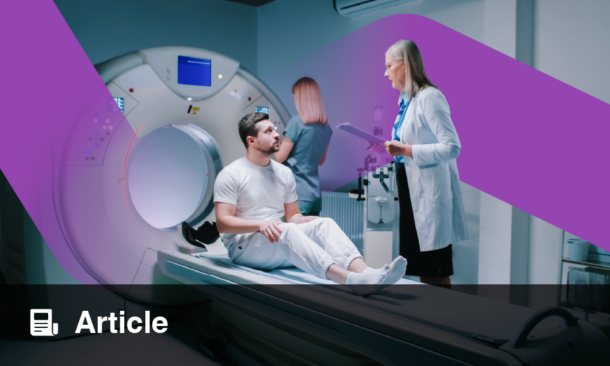Author: Helena Bradbury, EMJ, London, UK
Citation: EMJ Radiol. 2025;6[1]:27-30. https://doi.org/10.33590/emjradiol/YSHP1279
![]()
WITH an impressive attendance of 20,522 participants from 131 countries, the European Congress of Radiology (ECR) 2025 was an epicentre for innovation, collaboration, and advancement. Under the theme of ‘Planet Radiology’, this year’s congress highlighted the importance of sustainability and global health equity in the world of medical imaging and beyond. Featuring an expert panel, this particular session presented a deep dive into the role of novel therapies that require new imaging techniques.
NOVEL CELLULAR THERAPIES
Lucien Beer, Medical University of Vienna, Austria, opened his talk by summarising the history and current landscape of anti-cancer therapies. Until the development of radiotherapy in the 1890s, surgery was initially the only viable treatment strategy for cancer. Following radiotherapy, cytotoxic chemotherapies were then developed in the 1940s. Targeted therapies then emerged in the 2000s, which addressed many of the limitations of chemotherapy, including the multitude of side effects and non-specificity. Finally, within the last 15 years, immunotherapy has emerged as another pillar in cancer treatment. There are several different types of immunotherapies: adoptive cell transfer, immune checkpoint inhibitors, T cell antigen-directed antibodies, and vaccines.
Immune checkpoint inhibitors are the most common type of immunotherapy. Following recognition of the tumour cell by the immune cell and interaction via the T-cell receptor and antigen, tumour cells can additionally express co-stimulatory molecules that can interact with the T cell and inhibit the immune attack. Examples of these ligands include B7 and PDL-1, which can bind with the T cell co-receptors, CTLA4 and PD1, respectively. Anti-PD-1 and anti-CTLA4 antibodies have thus been developed for therapeutic intervention that blocks this co-stimulation, therefore boosting the immune system’s potential in attacking tumour cells. As highlighted by Beer, immunotherapy does not come without its adverse effects, and the response pattern can vary among patients.
Secondly, Beer touched on adoptive cell transfer based therapies, discussing tumour-infiltrating lymphocyte therapy (TIL) as an example. In this approach, the tumour is first surgically removed and the population of T cells that have already attacked the tumour in vivo are isolated, expanded, and then reinfused into the patient. A different approach is chimeric antigen receptor T-cell (CAR-T) therapy, whereby a patient blood sample is extracted. The T cells are isolated and genetically modified through viral insertion and translation of a chimeric antigen receptor, expanded, and then reinfused back into the patient. Whilst both approaches involve the extraction, expansion, and reinfusion of immune cells, CAR-T therapy does not involve the surgical removal of the tumour itself and instead genetically modifies the immune cells.
So, what are chimeric antigen receptors, and what is all the fuss about? The answer is the versatility. Endogenous T cell receptors can only bind with antigens presented by the major histocompatibility complex class of proteins; however, the CAR-T receptor is able to bind any antigen. Nonetheless, whilst effective and aggressive, this line also carries limitations and significant factors to be considered. Firstly, the target tumour antigen must be one that is limited to the cancer to prevent unnecessary damage to healthy cells and must also be expressed on every cancer cell to maximise the efficacy of the therapy. In a process known as antigen modulation, tumours can also downregulate the expression of the target antigen in attempts to avoid attack. Neurotoxicity and cytokine release syndrome have also been reported. Finally, CAR-T is not proving as effective in solid tumours and central nervous system disease as it is in haematologic diseases.
In recent years, cancer vaccines have also shown promise as an effective form of immunotherapy. For this, a tumour sample is taken, and DNA is sequenced to identify potential neoantigen targets that are specific to the cancer. Once selected, a therapeutic vaccine is then developed to target it. Cancer vaccines, however, also carry delivery and administration challenges and limited immunogenicity.
NOVEL THERAPY MONITORING: HYBRID AND FUNCTIONAL IMAGING
Following on from Beer, Nicola Mulholland, King’s College Hospital, London, UK, subsequently took the stage to delve deeper into the disruptive nature of CAR-T therapy and its impact in recent years in treating haematological malignancies. Some examples of the propriety products available in the UK include lisocabtagene maraleucel for relapsed or refractory large B cell lymphoma and ciltacabtagene autoleucel for relapsed or refractory multiple myeloma, amongst others.
So, who are the ideal patients for CAR-T therapy, and how is the response monitored? Mulholland first highlighted the balance needed when selecting patients for CAR-T. If the tumour volume is too great, you risk overwhelming the CAR-T cells. Conversely, too little tumour antigen and you risk not promoting enough in vivo expansion to fight the tumour. As explained by Mulholland, the response to CAR-T is usually assessed using PET CT imaging at multiple timepoints, including one baseline scan at pre-lymphodepletion, then routinely at 1 month and 3 months. This baseline scan can also guide the decision on subsequent bridge therapy, which is treatment administered to manage a patient’s condition while waiting for a more definitive therapy or procedure to take effect. If the patient has a complete response to CAR-T at 3 months, then 6-month imaging is not necessary. However, if the patient does not have a complete response according to the Lugano Criteria Deauville scores, then a 6-month scan would need to be performed.
This imaging approach is a good predictor of treatment response and long-term remission. If patients show partial or complete response at the 3-month mark, this is generally a good predictor of long-term remission. Complete response at 3-months corresponds to a 70% chance of ‘cure’ at 2 years, whilst a partial response at 6 months is linked to a shorter overall survival and progression-free survival.
In summary, PET CT is used to monitor response to CAR-T cell therapy for large B cell lymphoma and can also help predict treatment outcome. Serial PET CT imaging can additionally provide dynamic, on-treatment risk stratification to facilitate early identification of CAR T-cell therapy failure.
IMAGING PATTERNS OF TYPICAL (AND NOT SO TYPICAL) ADVERSE EVENTS IN CT AND MRI
Sandra Baleato-González, Hospital Clínico Universitario de Santiago de Compostela, Spain, opened her talk similarly to Beer, discussing the pillars of anti-cancer treatment, namely targeted therapies, immunotherapies, and cellular therapies. She acknowledged some of the common adverse events, including colitis, hepatitis, pneumonitis, pericarditis, or encephalitis, amongst others. Baleato-González noted that different imaging techniques are also favoured for each adverse event. For instance, CT may be recommended for enteritis, whilst ultrasound and MRI are recommended for hepatitis and pericarditis, respectively.
Whilst 70% of all adverse events can be depicted in imaging, certain challenges still remain for radiologists. For instance, adverse events can occur in any organ, system, or tissue as well as at any time-point from the outside, during or after treatment. Regarding the classification of adverse events, there is the Common Terminology Criteria for Adverse Events (CTCAE), which is a scale from Grade 1–5 that corresponds to a particular clinical observation and associated treatment recommendation. The severity of the clinical features ranges from asymptomatic (Grade 1) to death (Grade 5). Interestingly, she also shared a timeline for the presentation of immune-related adverse events. Cutaneous manifestations, such as dermatitis and rash, are typically the first to present, appearing within 4 weeks. This is followed by gastrointestinal manifestations, such as colitis and diarrhoea, at 5–10 weeks, and then lung manifestations, such as pneumonitis (9 weeks), and endocrine manifestations, including thyroiditis and hypophysitis (9–11 weeks).
Baleato-González discussed various imaging patterns and adverse events related to cancer treatments, including those caused by immunotherapy and targeted therapies. She covered conditions like organising pneumonia, pneumonitis, pulmonary haemorrhage, colitis, thyroiditis, T cell therapy side effects, intestinal lymphangiectasia, and pleural effusion. Notably, she emphasised the importance of distinguishing treatment side effects from disease progression, highlighting mimickers such as adrenalitis, sarcoidosis-like reaction, granulomatous prostatitis, and pancreatitis. In her concluding remarks, she stressed the radiologist’s role in identifying these conditions, offering differential diagnoses, and recognising emergency manifestations to help manage patients effectively.
IMAGING PATTERNS OF TYPICAL ADVERSE EVENTS IN HYBRID IMAGING
Manil Subesinghe, Guy’s and St Thomas’ Hospital, London, UK, closed the session drawing on the imaging patterns of typical adverse events in hybrid imaging. Opening his presentation, Subesinghe discussed the use of monoclonal antibodies in cancer immunotherapy, particularly focusing on immune checkpoint inhibitors that block natural immune “handbrakes”, allowing T cells to attack tumour cells. The two key immune checkpoint interactions are CD86/CTLA-4 and PD-L1/PD-1, which tumours exploit to evade the immune system.
Following on, Subesinghee explained that immune-related adverse events are common side effects of immunotherapy, caused by immune system attacks on healthy tissues. These side effects vary by organ/system (e.g., heart, endocrine, gastrointestinal, lungs, and kidneys) and are more frequent with combination therapy. Early detection is crucial, and fluorodeoxyglucose PET CT imaging plays a key role in identifying these adverse events before clinical symptoms appear. As highlighted by Subesinghe, it allows for both functional and anatomical assessment, providing valuable insights into treatment response and side effects. He also spoke on the importance of clinical history and lab results in accurately diagnosing immune-related adverse events.
In conclusion, while immune-related adverse events are concerning, they often correlate with a positive response to treatment. The use of fluorodeoxyglucose PET CT is recommended for monitoring both tumour progression and immune-related side effects in immunotherapy.
CONCLUSION
In conclusion, as CAR-T, immunotherapies, and cellular therapies evolve, so must imaging approaches. Hybrid and functional imaging, such as PET CT, offers invaluable insight into treatment responses and adverse events, ensuring early detection and improved patient management. The session underscored the importance of adapting imaging strategies to keep pace with these groundbreaking therapies, fostering better outcomes and advancing the field of oncology.







